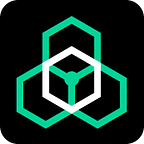zkLink Nova’s Token Merge Is The First L3 Solution To Unify Fragmented Assets On Ethereum
The fragmentation of liquidity, crypto assets, and users across various blockchain platforms, networks, ecosystems, and DApps is a significant issue that impacts the functionality, efficiency, and attractiveness of the Web3 and DeFi industries. However, this is a natural byproduct of the market’s diverse growth path, which is frequently characterized as a “multi-chain world” with non-interoperable assets.
Under the umbrella of this multi-chain world, DApps are spread across ecosystems, and liquidity is fragmented between different blockchains, Layer 2 Rollups, and even among DApps within a single rollup.
As a result of this liquidity fragmentation problem, non-standardized assets, and the lack of seamless cross-chain and cross-rollup financial transfer methods, are increased slippage (in the case of DeFi), higher trading costs, reduced capital efficiency, poor user experiences (in the case of bridging), slow trade execution and finality times, and unfriendly developer environments.
The issues above are a hindrance to facilitating blockchain adoption.
At the moment, cross-chain bridges, interoperability protocols, liquidity/DEX aggregators, and others have proven insufficient in tackling this challenge, highlighting the importance of an infrastructure solution such as zkLink Nova’s L3 that can aggregate liquidity and merge tokens for interoperable use and trading.
Aggregating Fragmented Liquidity & Unifying Assets Through Token Merge
zkLink Nova is the industry’s first aggregated Layer 3 zkEVM Rollup network built on top of Ethereum and Ethereum Layer 2 rollups (L2s) that can aggregate liquidity from the Ethereum ecosystem and merge different contract address tokens into unified assets for enhanced DeFi utilization.
zkLink Nova aggregates fragmented liquidity by allowing ETH, native Layer 2 ERC-20 tokens, and selected stablecoins to be directly bridged from Ethereum and Ethereum Layer 2 Rollups to zkLink Nova and merged for standardization and interoperable trade.
zkLink Nova’s liquidity aggregation and token merge features are just the beginning. At the moment, over 80 different cryptocurrency assets have been aggregated on zkLink Nova’s Layer 3, ETH deposited from the different Layer 2s are automatically merged into the same ETH, and four stablecoin tokens are now available for token merge:
- USDT
- USDC
- DAI
- wBTC
In the future, beyond stablecoins, zkLink Nova will begin work on merging and unifying liquidity from L2 native tokens, and even key LST and LRT tokens, with the possibility of merging various utility tokens.
Significance Of Token Merge: ETH & ERC-20 Stablecoins
The beauty of token merge in facilitating liquidity aggregation is that it abstracts away the complexity of using different assets bridged across-chain and between rollups.
Currently, zkLink Nova has already achieved token merge through ETH Native Unification where ETH deposited from different Layer 2s are automatically merged into the same ETH token on zkLink Nova’s L3. This is because Layer 2 networks that utilize ETH as the network’s gas token can be automatically merged into a unified ETH through zero-knowledge proofs.
However, one issue left is that identical ERC-20 tokens bridged from different networks cannot be automatically merged without external information or setup. This is because ERC-20 assets of the same value and kind on multiple L2s have different token addresses.
For example, USDC bridged from Arbitrum and Ethereum to zkLink Nova have two unique addresses. Only when these two assets are merged can true liquidity aggregation be achieved.
Having different token addresses is a hindrance to interoperable and capital-efficient asset utilization. This is because a user’s USDC on Ethereum and USDC on Arbitrum cannot be used in a trading pair on a DEX as one USDC.
Therefore, to address this issue of asset non-uniformity, zkLink Nova employs an upgradeable token merge contract governed by a Governance Committee and a Security Council. This contract allows it to merge tokens, stablecoins for example, of the same value into one token.
These stablecoins from multiple rollups (with different contract addresses) such as Arbitrum, Base, Linea, Manta, Mantle, Optimism, and zkSync, being merged into one unified token is a significant achievement because it allows the assets to be standardized and used seamlessly in DApps.
The user and DApp do not need to deal with multiple wallets, the complexities of switching networks, or managing token standards.
zkLink Nova’s Layer 3 connectivity, and its liquidity aggregation and token merge features, abstract away the complexities and specific details of each underlying blockchain technology or rollup and provide a more seamless, cost-efficient, and unified interface for developers and users.
